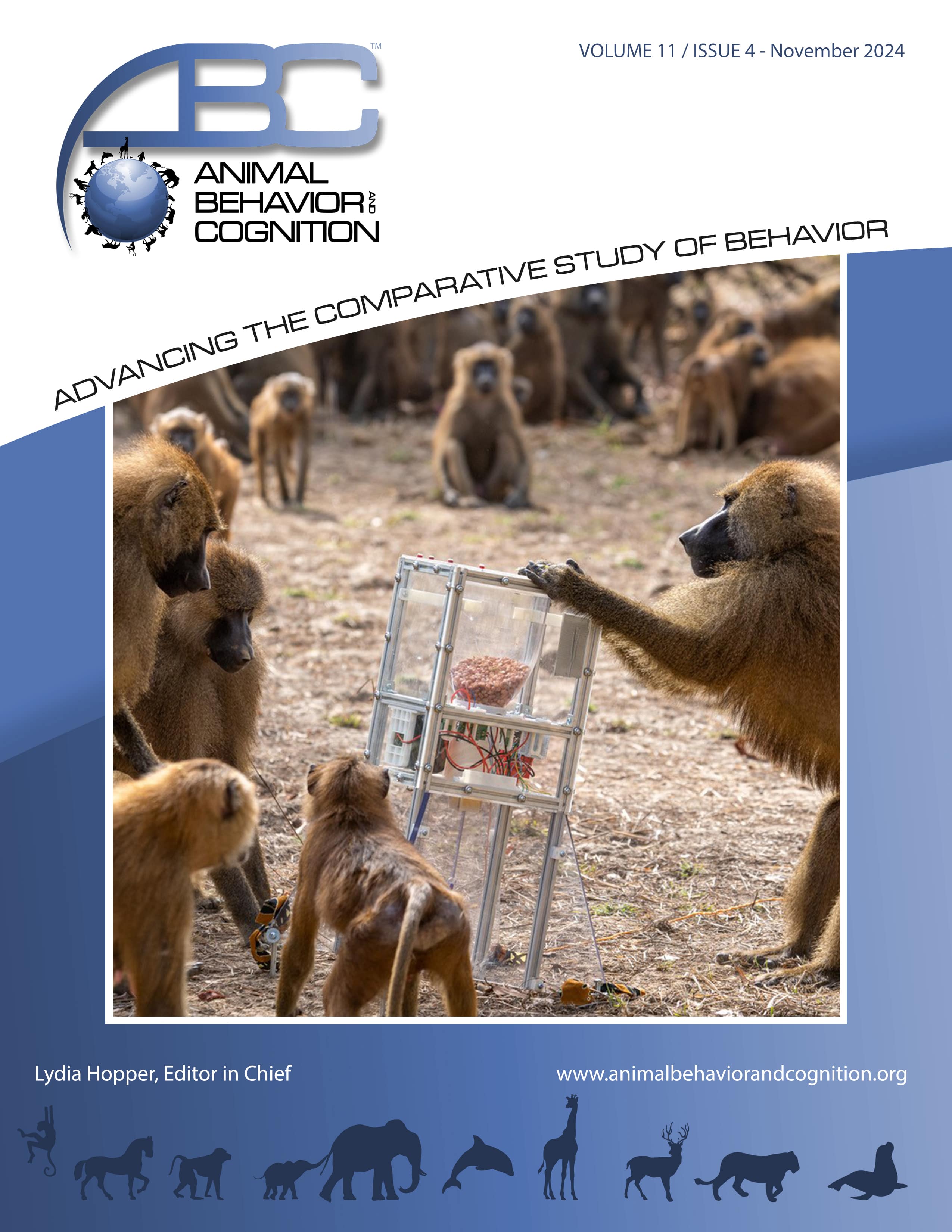Vol 11, Issue 4, November 2024
Tell-Tail Fear Behaviors in Kittens: Identifying the Scaredy Cat
Citation
Graham, C., Khalife, S., Pearl, D. L., Mason, G. J., & Niel, L. (2024). Tell-tail fear behaviors in kittens: Identifying the scaredy cat. Animal Behavior and Cognition, 11(4), 361-392. https://doi.org/10.26451/abc.11.04.03.2024
Abstract
Identifying when kittens are in fearful emotional states is crucial to protecting welfare, preventing behavioral issues, and ensuring caretaker and researcher assessments are accurate. Research is needed to confirm if kittens have fully developed fear responses similar to those of adult cats when they are in situations that evoke fear. To assess which behaviors kittens show when they are avoiding novel and startling stimuli, kittens (5 to 8 weeks old; n = 46) completed trials involving exposure to such stimuli, alternating with blank control trials. Trials were separated into immediate responses (during a short stimulus presentation or equivalent control period), and delayed responses (after stimulus removal). Mixed regression models, with litter and kitten as random intercepts, were used to model durations and frequencies of behaviors. Across both time phases, kittens displayed significantly longer durations of arched back, piloerection, freezing, and tail tucking, shorter durations of eating, and greater rates of putting their ears back during fear trials compared to blank trials. During stimulus presentations, kittens displayed significantly shorter durations of retreating to a hutch and greater rates of flinching, whereas after stimulus removal, kittens displayed significantly longer durations of crouching and shorter durations of upright tail. Responses were also affected by kitten coat color, sex, and being mother-reared. Thus, fear behaviors in 5-to-8-week-old kittens are fully developed and similar to what is observed in adult cats. These results allow for accurate identification of fear in kittens, with the goal of improving research on kitten fear development and kitten welfare.
Keywords
Kitten, Fear, Behavior, Socialization, Coat color, Mother-reared
